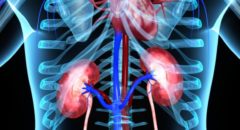 According to a review published in the Journal of the Academy of Nutrition and Dietetics, approximately 30 million Americans – about 15 percent of adults – have chronic kidney disease, a number that is expected to increase in the next 20 years due to rising obesity rates and longer lifespans.
According to a review published in the Journal of the Academy of Nutrition and Dietetics, approximately 30 million Americans – about 15 percent of adults – have chronic kidney disease, a number that is expected to increase in the next 20 years due to rising obesity rates and longer lifespans.
Black Americans have an increased risk of developing kidney disease due to high rates of diabetes, high blood pressure, and heart disease. In fact, black Americans are almost four times as likely as whites to develop kidney failure.
There’s evidence that the proper diet helps people with chronic kidney disease improve their blood sugar and blood pressure. Moreover, the appropriate diet will slow the progression of the disease and even delay or prevent the need for dialysis or a transplant.
Despite the evidence, nearly 90 percent of individuals with chronic kidney disease never meet with a registered dietitian nutritionist (RDN) for education on how to eat right with kidney disease.
"Most patients don't understand how big a role their diet plays in the management of their kidney disease," Marsha Schofield, a registered dietitian and senior director of governance for the Academy of Nutrition and Dietetics said in a press release.
RELATED: 5 Ways to Catch Kidney Disease Early
"Medical nutrition therapy [diet counseling] helps patients with chronic kidney disease improve their blood sugar and blood pressure, which will slow the progression of the disease and even delay or prevent them from needing to have dialysis or a transplant."
Decreasing animal protein and salt while increasing your intake of fresh fruits and vegetables is the first step to eating right with kidney disease. However, as your kidneys slow down, you will need to decrease phosphorus additives and potassium. Making all these changes to your diet can be challenging. The following 5 tips can help you get started.
1. Choose And Prepare Foods With Less Salt And Sodium
Sodium is a part of salt. Eating less salt and sodium helps lower your blood pressure and may slow down kidney disease. The kidneys filter sodium out of the body and into the urine. When your kidneys are damaged, they cannot filter as well as healthy kidneys can. This can cause sodium to stay in your body and make your blood pressure go up.
- Buy fresh food more often. Sodium is added to many packaged foods.
- Use spices, herbs, and sodium-free seasonings in place of salt.
- Check the Nutrition Facts label on food packages for sodium. A Daily Value of 20% or more means the food is high in sodium.
- Try lower-sodium versions of frozen dinners and other convenience foods.
- Rinse canned vegetables, beans, meats, and fish with water before eating.
2. Eat the Right Amount and the Right Types of Protein
Protein can be found in foods from animals and from plants. Most diets include both types of protein. When your body uses protein, it produces waste which is removed by the kidneys. Too much protein can make your kidneys work harder.
- Eat small portions of protein foods.
- Protein is found in foods from plants (beans, nuts, and grains) and animals (chicken, fish, meat, eggs, and dairy). An RDN can help you choose the combination that’s right for you.
3. Choose Foods that are Healthy for Your Heart
Heart-healthy foods will help keep fat from building up in your blood vessels, heart, and kidneys.
- Grill, broil, bake, roast, or stir-fry foods, instead of deep-frying.
- Cook with nonstick cooking spray or a small amount of olive oil instead of butter.
- Trim fat from meat and remove the skin from poultry before eating.
4. Choose Foods with Less Phosphorus
When you have kidney disease, phosphorus can build up in your blood, making your bones thin, weak, and more likely to break. It can also cause itchy skin, and bone and joint pain. Most people with kidney disease need to eat foods with less phosphorus than they are used to eating.
- Look for phosphorus—or for words with “PHOS”—on ingredient labels because many packaged foods have added phosphorus.
- Deli meats and some fresh meat and poultry can have added phosphorus. Ask the butcher to help you pick fresh meats without added phosphorus.
5. Choose Foods that Have the Right Amount of Potassium
In some people with kidney disease, the kidneys may not remove extra potassium from the blood. Some medicines also can raise your potassium level. Your food choices can help you lower your potassium level.
- Salt substitutes can be very high in potassium. Be sure to check with your health care provider about using them.
- Potassium chloride can be used in place of salt in some packaged foods, like canned soups and tomato products. Read food labels and limit foods with potassium chloride on the ingredient list.
- Drain canned fruits and vegetables before eating.
Eating less salt, limiting protein foods and food high in potassium and phosphorus, and limiting fluids can be frustrating. An RDN specially trained in nutrition therapy for kidney disease can be very helpful.
The RDN will teach you how you can incorporate small amounts of restricted foods you like into your meal planning and how to flavor foods with spices instead of salt. Click here to find an RDN near you.

Constance Brown-Riggs, is a registered dietitian, certified diabetes educator, national speaker and author of the Diabetes Guide to Enjoying Foods of the World, a convenient guide to help people with diabetes enjoy all the flavors of the world while still following a healthy meal plan. Follow Constance on social media @eatingsoulfully









